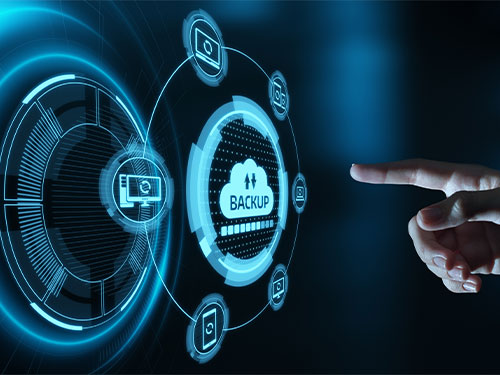
Disaster Recovery and why you need the cloud
Risk assessment, risk planning, and risk mitigation. And then the disaster happens. Business continuity kicks in – in the cloud.
Whether it be unplanned, prolonged load shedding or a ransomware hack that takes your business offline, disaster recovery and business continuity is dependent on the cloud.
Moving services, operations and data to the cloud not only ensures security, resilience and recovery but gives businesses an advantage in terms of building efficiencies, maintaining service levels to their customers and creating new revenue streams. When load shedding hits and the lights go out, your data is not only backed-up and secure, but available and accessible.
It’s not just business as usual, but an opportunity to increase productivity, scalability, agility and performance. The cloud is, quite simply, key in the digital transformation of all entities. It is a strategic tool, providing a platform that can create and develop solutions tailored to your business as it grows and evolves.
It would be remiss not to talk about the potential harm of disasters on businesses. These are the times we live in. A power grid collapse, a fibre cable cut under the ocean, floods, malware, the list is long. Having an on-site, one-server backup for your data and your company’s operating services is akin to keeping your cash stashed under your mattress. The only good thing is that you think you know where it is and have a false sense of control over it.
The bad thing? Everything else. It’s an easy, vulnerable, one-source target that requires constant levels of scrutiny and security. When disaster hits, it is the first thing to go, the first thing to be targeted, and when it is gone, it is gone forever.
Not everyone has the resources to set up multiple backup servers. There is, surprisingly, still naivety among many businesses about their security just as there is unease and trepidation about moving away from an on-site, lock-and-key situation to a cloud solution.
The solution is often through a layered, nuanced system.
Alibaba Cloud Disaster Recovery (DR) supports warm standby, which acts as an extension of the organisation’s on-premises environment. During warm standby, a mirror environment offers a scaled-down version of a fully functional environment that remains running in the cloud. This minimises the recovery time and enables mission-critical systems to meet stringent RTO (recovery time objective) and RPO (recovery point objective) targets.
Being ready, being able, and being aware of vulnerabilities, and potential disasters is the first step of becoming an entity that can work without fear of the loss of data and service. The cloud mitigates and negates the potential harm of a disaster, and creates an environment not just for recovery, but continuity.










